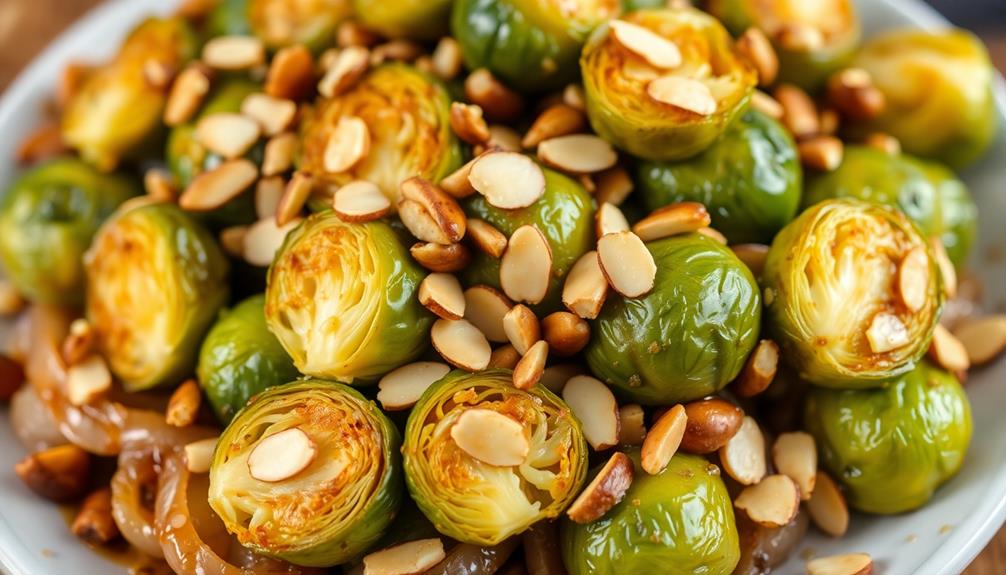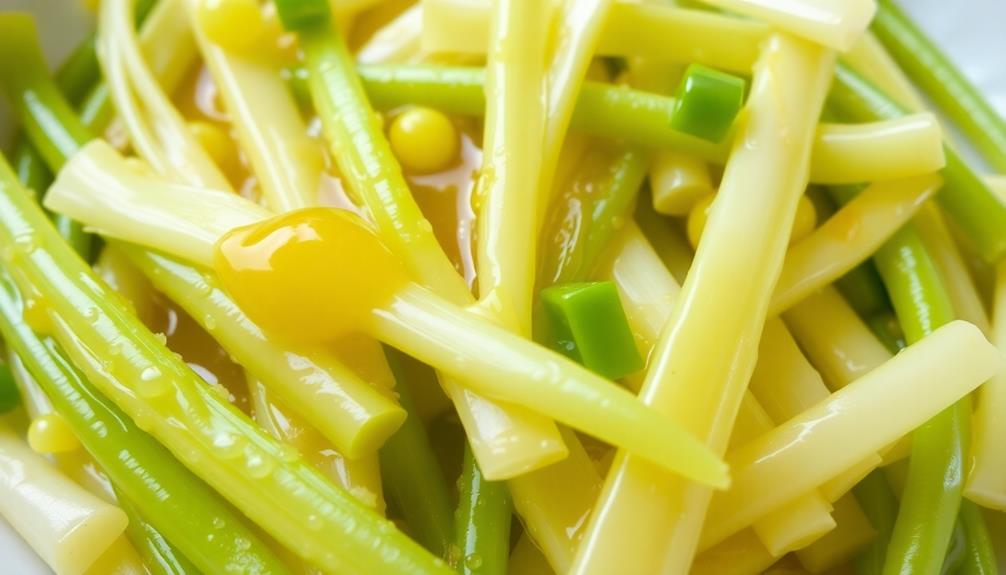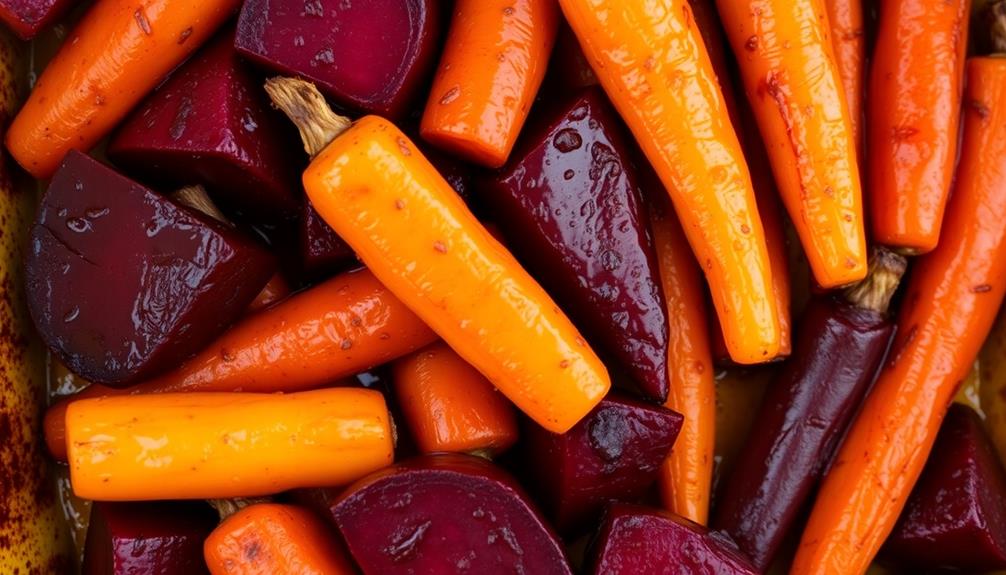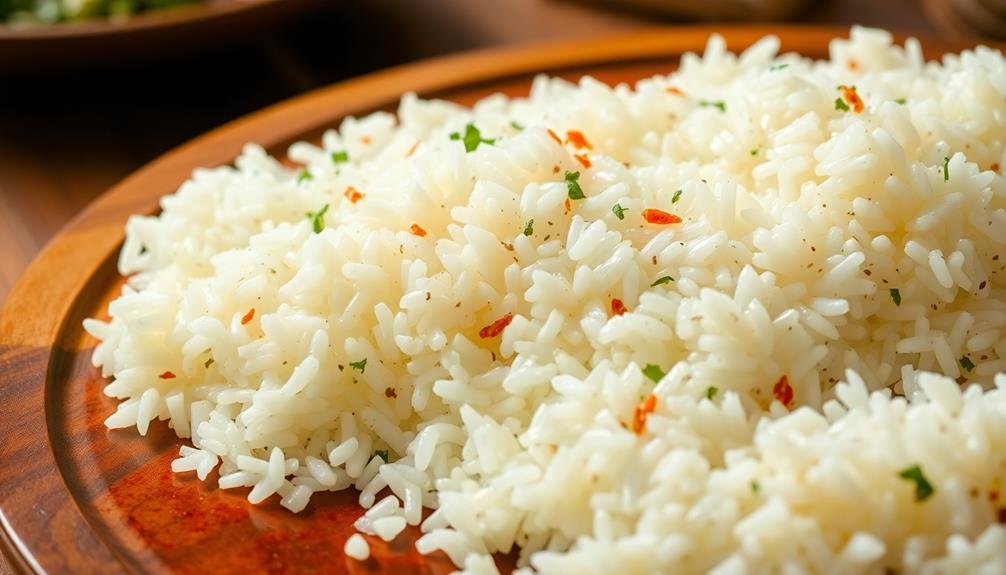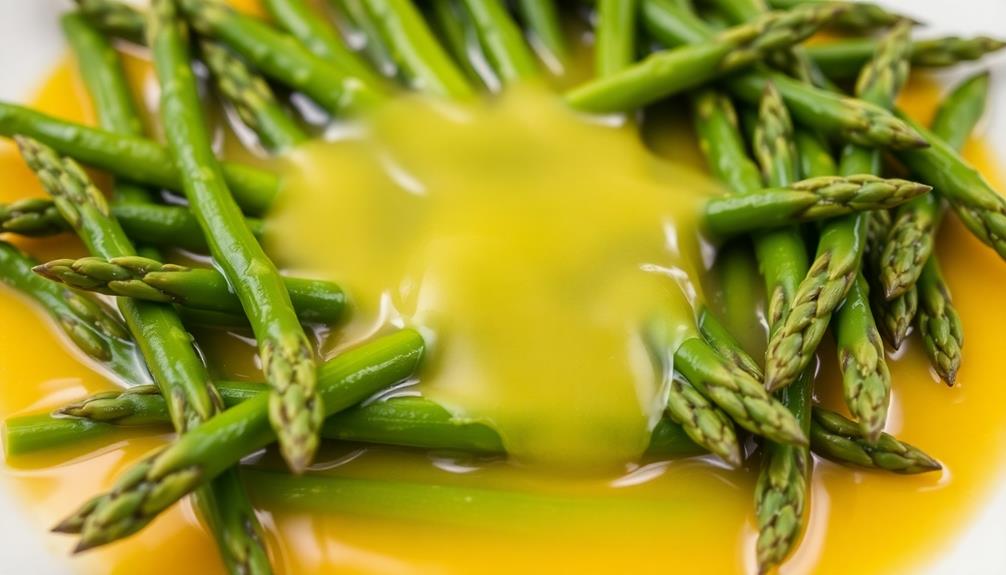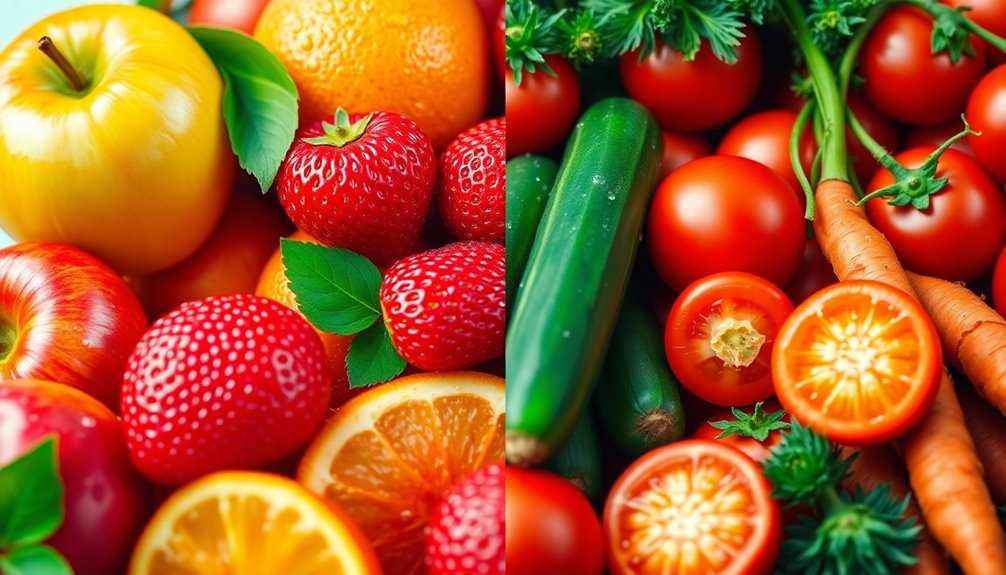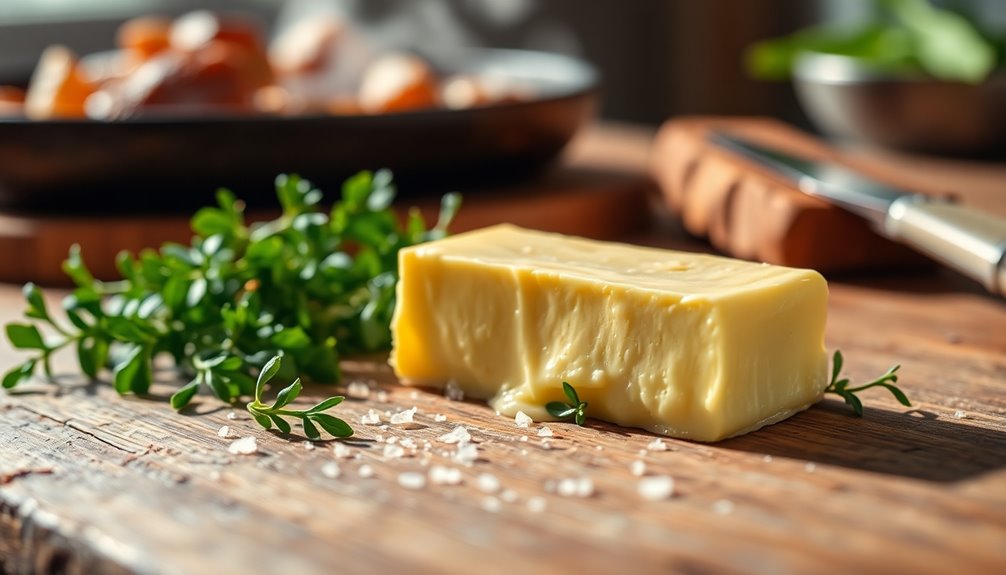Brussels sprouts may be a polarizing vegetable, but this Brown Butter Brussels Sprouts recipe transforms them into a crispy, nutty, and utterly delicious dish that everyone will love. You'll start by browning the butter until it's rich and nutty, then toss the trimmed and halved Brussels sprouts in the fragrant, caramelized butter. After roasting until they're deeply golden and crispy, the sprouts develop a wonderfully sweet and savory flavor that's sure to win over even the most skeptical eaters. Curious to learn more about the history and preparation of this tasty twist on a classic veggie?
Key Takeaways
- This recipe transforms the often polarizing Brussels sprouts into a desirable dish by browning the butter for a nutty, caramelized flavor.
- The key preparation steps involve trimming, halving, and roasting the Brussels sprouts to achieve a crispy, crunchy texture.
- The final dish combines savory and slightly sweet elements, making it a crave-worthy side or main course.
- The recipe is designed for ease, suitable for all cooking levels, and encourages repeat making due to its versatility and crowd-pleasing appeal.
- Serving suggestions include pairing the Brown Butter Brussels Sprouts with various main courses, tossing them with pasta, or enjoying them as a healthy snack.
History
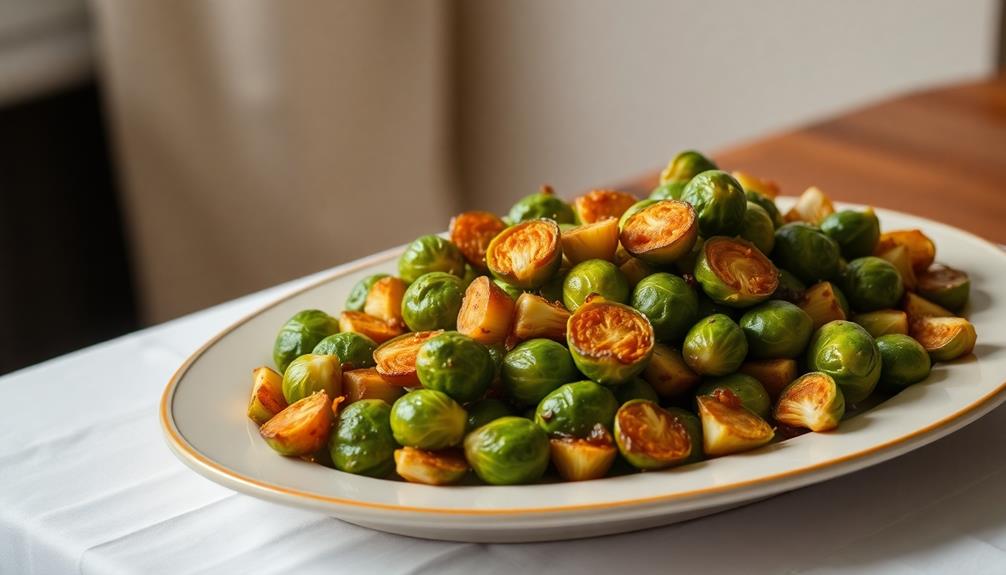
The humble Brussels sprout has undergone a remarkable transformation over the centuries. Once scorned as a bitter, unappetizing vegetable, these little cabbages have now become a beloved culinary darling.
Tracing the sprout's journey, you'll find that it originated in ancient Rome and the Mediterranean region, where it was prized for its hardy, resilient nature. As Europeans explored the world, the Brussels sprout traveled with them, eventually finding a home in Belgium, where it earned its now-famous moniker.
Notably, agricultural practices in various regions contributed to the sprout's development, much like the historical farmhouses that reflect deep-rooted cultural narratives.
In the early 20th century, the sprout's popularity soared, as innovative chefs began experimenting with new cooking techniques. The discovery of roasting Brussels sprouts, for instance, unlocked their inherent sweetness and transformed the texture into a delightfully crisp exterior and tender interior.
And now, with the addition of rich, nutty brown butter, the Brussels sprout has reached its full culinary potential, delighting taste buds everywhere.
Recipe
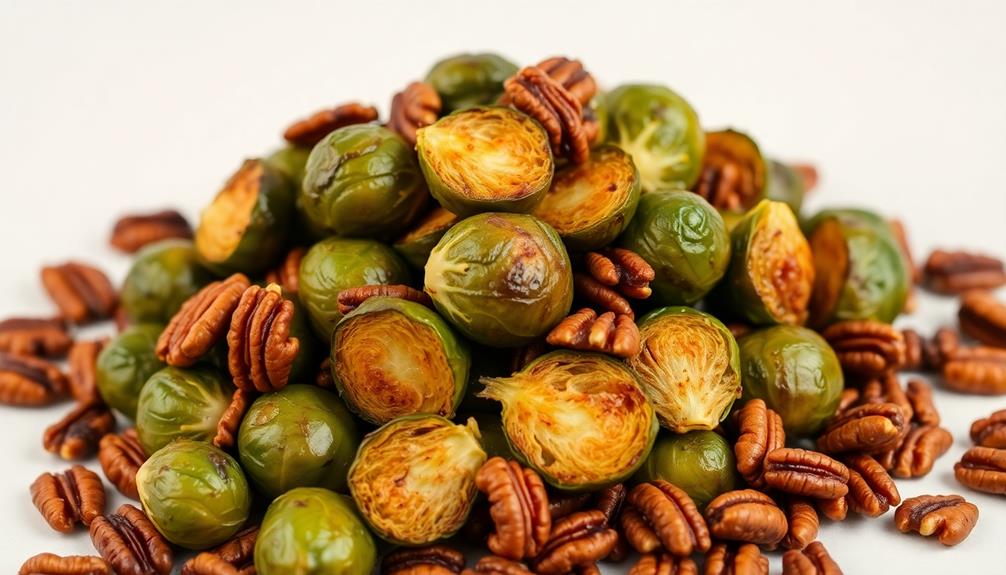
Brussels sprouts are a polarizing vegetable. Some love their earthy, slightly bitter flavor, while others find them unpalatable. However, with the right preparation, even the most reluctant eater can be won over. This recipe for Brown Butter Brussels Sprouts is a game-changer, transforming the humble sprout into a delightful side dish.
The key to this recipe lies in the magical process of browning the butter. As the butter sizzles in the pan, it develops a nutty, caramelized flavor that complements the Brussels sprouts perfectly. The result is a dish that's both savory and slightly sweet, with a lovely crunch from the roasted sprouts.
Ingredients:
- 1 lb Brussels sprouts, trimmed and halved
- 4 tbsp unsalted butter
- 2 cloves garlic, minced
- 1 tsp lemon juice
- Salt and pepper to taste
Instructions:
Melt the butter in a large skillet over medium-high heat. Continue cooking, swirling the pan occasionally, until the butter turns golden brown and develops a nutty aroma, about 5-7 minutes.
Add the Brussels sprouts and sauté, stirring occasionally, until they're tender and caramelized, about 10-12 minutes. Stir in the garlic and cook for an additional minute. Remove from heat, drizzle with lemon juice, and season with salt and pepper to taste.
When cooking this dish, be patient and allow the butter to brown fully. The nutty flavor is crucial to the dish's success. Additionally, be sure to cut the Brussels sprouts evenly so they cook at the same rate.
Serve these Brown Butter Brussels Sprouts as a side dish to your favorite protein or as part of a larger meal.
Cooking Steps
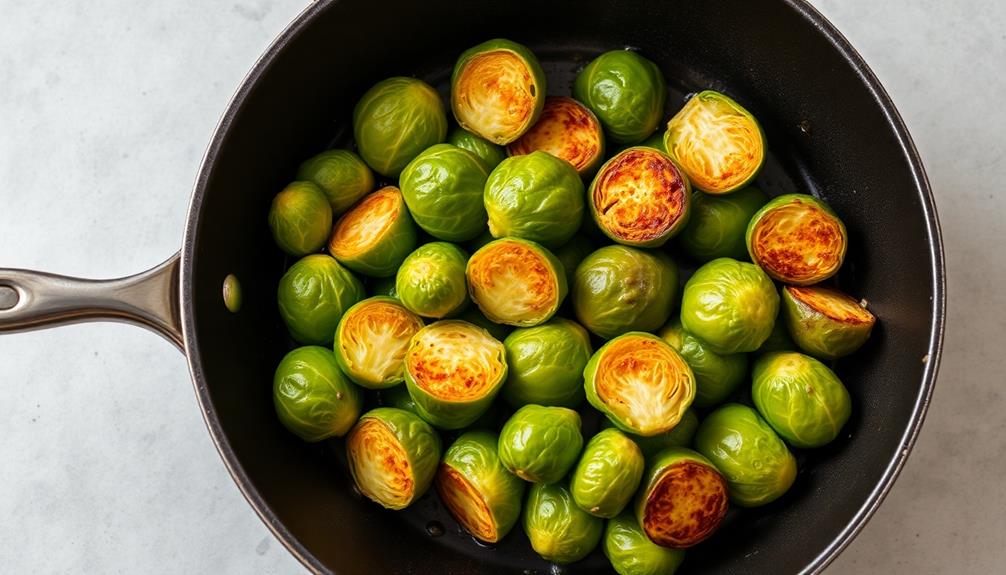
Trim and halve those Brussels sprouts to prep them for roasting.
For an added health boost, consider incorporating essential oils like peppermint oil for respiratory support while you enjoy your cooking experience.
Next, melt the butter in a pan until it's a rich, nutty brown.
Now, add the sprouts and toss them until they're evenly coated in that heavenly brown butter.
Time to roast them up until they're deeply caramelized – they'll be irresistible!
Step 1. Trim and Halve Brussels Sprouts
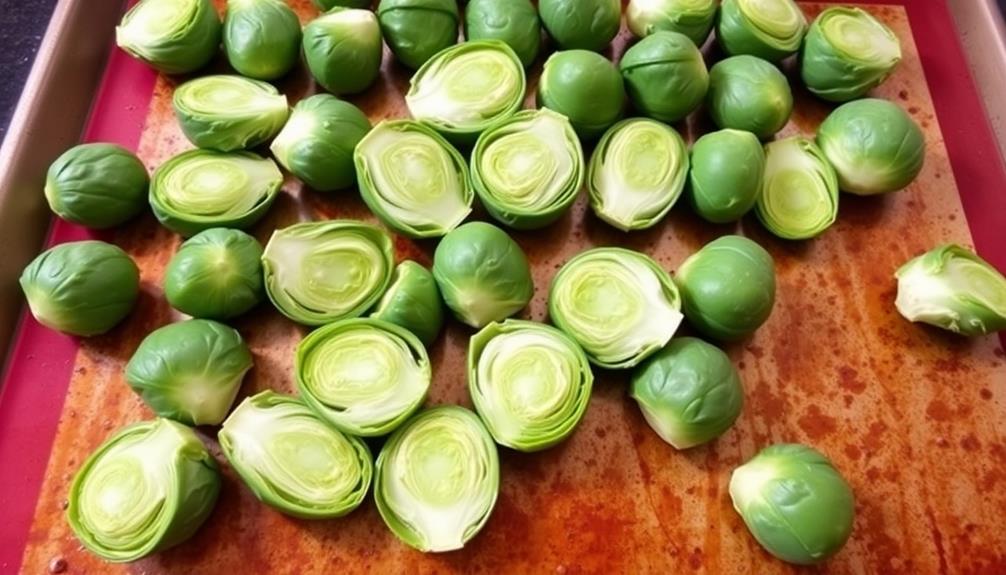
Start by removing any discolored or damaged outer leaves from the brussels sprouts.
Grab each sprout and give it a gentle trim at the base, cutting off just the very bottom end. This will help release any tough or woody stems.
Next, use a sharp knife to carefully slice each sprout in half from top to bottom. Try to make clean, even cuts so the sprouts cook evenly.
Once they're all trimmed and halved, give the brussels sprouts a good rinse under cool running water.
Gently pat them dry with a clean kitchen towel or paper towels. This will help the sprouts get nice and crispy when you cook them later.
With your brussels sprouts all prepped, you're ready to move on to the next step – browning the butter!
Step 2. Melt Butter Until Nutty Brown
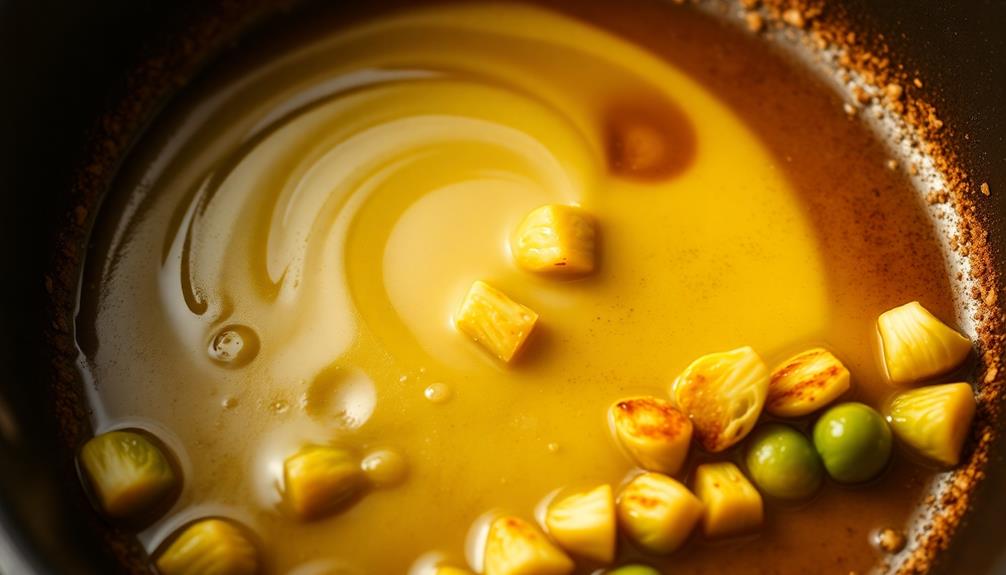
To begin browning the butter, melt it in a large skillet or saucepan set over medium heat. As the butter melts, keep a close eye on it, stirring occasionally. You'll start to see tiny little bubbles form and the butter will begin to foam up. This is good! It means the butter is starting to brown.
Now, you'll want to keep a watchful eye as the butter continues to cook. The color will start to change from pale yellow to a rich, nutty brown.
You'll also notice a delightful aroma filling the air – that's the nutty, toasted flavor developing. Once the butter reaches a deep amber hue and has a nutty, fragrant scent, it's time to remove it from the heat.
Be careful not to let it burn, as that can result in a bitter, acrid flavor. Removing the pan from the heat will stop the browning process and ensure you end up with perfect, golden-brown butter.
Step 3. Add Brussels Sprouts
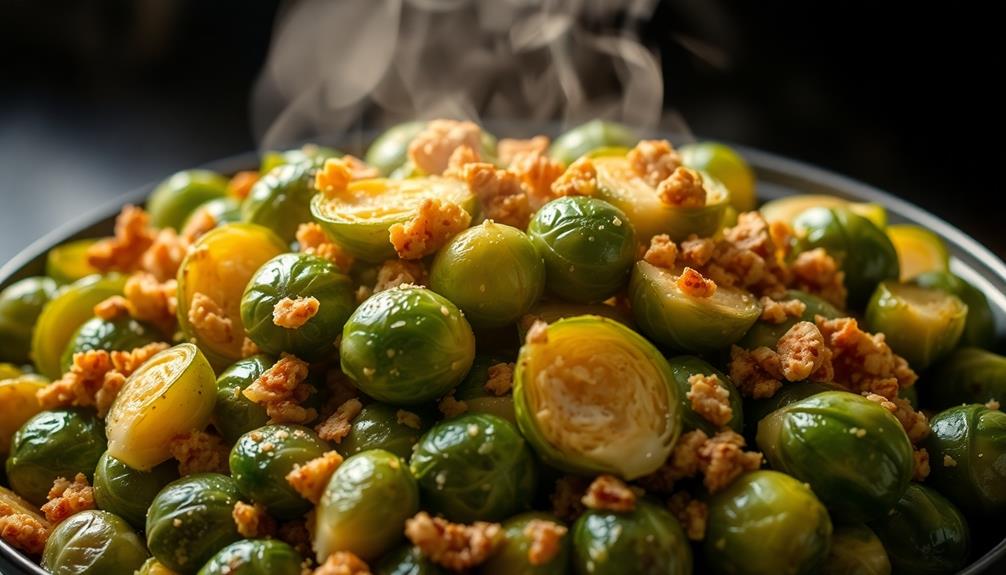
Once the butter has reached the perfect nutty-brown hue, you can add the brussels sprouts to the pan.
Make sure you prepare the cooking area safely, as proper venting requirements can enhance your overall cooking experience.
Watch as they sizzle and dance, absorbing all that rich, buttery goodness. Give them a gentle stir, ensuring each sprout is coated evenly.
As they begin to caramelize, you'll notice the edges turning delightfully crispy, while the centers stay tender and juicy.
The earthy, slightly bitter notes of the brussels sprouts perfectly complement the nutty sweetness of the brown butter.
With each bite, you'll be delighted by the contrast of textures – the crisp, golden exterior and the soft, melty interior.
The brussels sprouts will become infused with the warm, toasted flavors, transforming them into an irresistible side dish.
Keep a close eye and stir occasionally, allowing the sprouts to cook until they reach your desired level of doneness.
Once they're perfectly tender and caramelized, you're ready to serve these incredible brown butter brussels sprouts.
Step 4. Toss Sprouts Until Evenly Coated

Gently toss the brussels sprouts in the pan until they're evenly coated with the rich, nutty brown butter. The sprouts should glisten and shimmer, every inch bathed in the golden, aromatic sauce.
Using a pair of tongs or a spatula, lift and turn the sprouts, ensuring each one is fully submerged and caressed by the decadent butter. As you toss, the sprouts will start to sizzle and caramelize, developing a delightful crispness around the edges.
Keep a close eye, gently tossing and turning until the sprouts are perfectly coated and glistening. The key is to handle them with care, allowing the butter to cling to every nook and cranny.
Once the sprouts are evenly coated, they're ready to serve up and enjoy, with that irresistible nutty, buttery flavor in every bite.
Step 5. Roast Until Deeply Caramelized
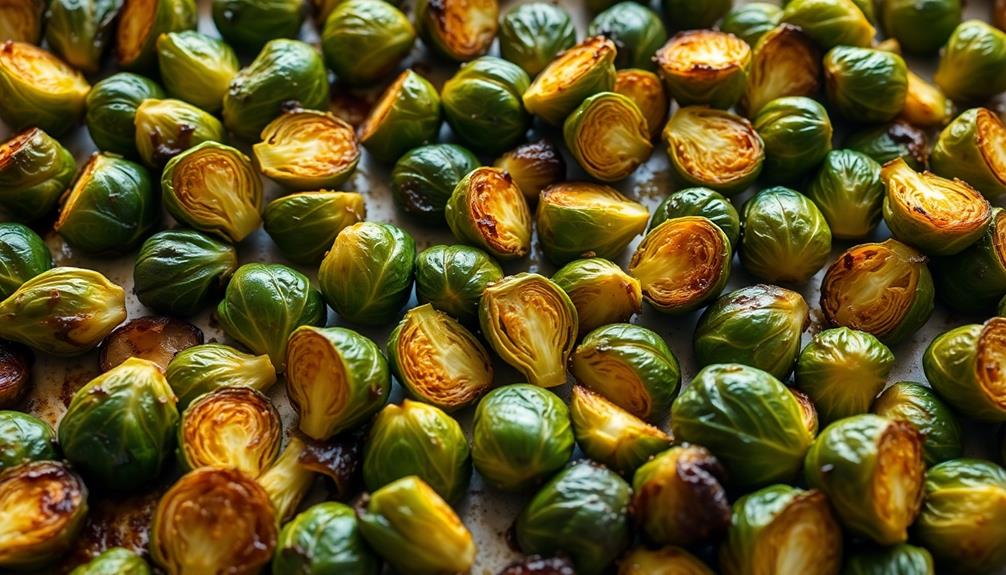
How else can you achieve that deep, caramelized flavor on the brussels sprouts? By roasting them in the oven until they're perfectly crispy and golden brown! This is the key to unlocking the nutty, almost sweet essence of these little green gems.
Preheat your oven to 400°F (200°C) and line a baking sheet with parchment paper. Spread the tossed brussels sprouts in a single layer, making sure they've plenty of room to breathe. You want them to get nice and crispy, not steamed.
Roast for 18-22 minutes, flipping them halfway through, until they're deeply caramelized and a gorgeous shade of amber. Keep a close eye on them towards the end to prevent burning. The sugars in the sprouts will start to caramelize, creating those irresistible crunchy, nutty edges.
Once they're done, transfer the roasted brussels sprouts to a serving bowl and prepare to be dazzled by their irresistible flavor and texture!
Final Thoughts

The brussels sprouts, now perfectly caramelized, invite you to savor each bite fully. The nutty, buttery aroma fills the air, making your mouth water in anticipation.
As you take the first taste, the flavors burst forth – the sweetness of the roasted sprouts mingling with the rich, toasted notes of the brown butter. It's a symphony of textures, too, with the crisp outer leaves giving way to the tender, melty centers.
You can't help but smile, knowing you've created something truly special. These brussels sprouts are a revelation, transforming a sometimes-maligned vegetable into a dish that everyone will crave.
Serve them as a side, toss them with pasta, or enjoy them on their own – no matter how you indulge, you'll be left feeling satisfied and content.
The best part? This recipe is so simple, you'll find yourself making it again and again. Embrace the magic of brown butter and let these brussels sprouts become a new family favorite.
Frequently Asked Questions
Can I Use Frozen Brussels Sprouts Instead of Fresh?
Absolutely! You can use frozen brussels sprouts instead of fresh. Just be sure to thaw and pat them dry before cooking. Frozen brussels sprouts can work just as well, saving you time and effort.
How Long Do the Brussels Sprouts Need to Chill in the Fridge?
You can skip the chilling step if you're using frozen Brussels sprouts. Just make sure to pat them dry before cooking to get that nice crispy texture. No need to let them chill in the fridge.
Is It Possible to Make This Recipe Ahead of Time?
You can absolutely make this recipe ahead of time. Simply prepare the brussels sprouts, then store them in an airtight container in the fridge for up to 3 days. When ready to serve, reheat and finish with the brown butter.
Can I Substitute the Brown Butter With Regular Butter?
Yes, you can substitute regular butter for the brown butter in this recipe. The flavor profile won't be as nutty, but it'll still result in deliciously crispy brussels sprouts. Just be mindful of the cooking time as regular butter has a lower smoke point.
How Do I Get the Brussels Sprouts to Be Extra Crispy?
To get extra crispy brussels sprouts, you'll want to toss them in oil and spread them out in a single layer on a baking sheet. Roast them at a high temperature, flipping halfway, until they're nicely browned and crunchy.
